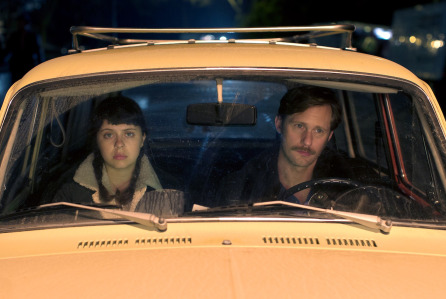By providing your information, you agree to our Terms of Use and our Privacy Policy. We use vendors that may also process your information to help provide our services. This site is protected by reCAPTCHA Enterprise and the Google Privacy Policy and Terms of Service apply.
New Directors/New Films Opens with Provocative Sundance Hit ‘Diary of a Teenage Girl’

The Film Society of Lincoln Center and MoMA opened their annual New Directors/New Films series this week with one of the most buzzed-about films from Sundance this year, Mari Heller’s “Diary of a Teenage Girl.” The film stars 23-year-old newcomer Bel Powley as Minnie, a teenager coming of age in free-wheeling 1970’s San Francisco. When she starts sleeping with her mother’s boyfriend (Kristen Wiig and Alexander Skarsgard, respectively), Minnie discovers the power—and the pitfalls—of her burgeoning sexuality.
The film has garnered acclaim for its unbridled depiction of sexuality from a distinctively female point of view. Don’t let the film’s rather serious subject matter fool you: Above all, it’s a vibrant, comedic story of growing up that happens to be told with a bold young woman’s voice.
“I didn’t want to make a film,” said Heller as she took the stage to answer questions after the screening. “I just had to make this film.” When she read Phoebe Gloeckner’s graphic novel “Diary of a Teenage Girl,” Heller became transfixed with the story. “I was really driven by this material, by this book, by this girl, and wanting to tell this story. I had never felt so compelled by any story before. I wasn’t even planning on directing it when I first wrote the screenplay, but as I got further along I couldn’t even imagine somebody else directing my movie. So, then I had to figure out how to direct.”
Read More: 7 Hidden Gems from New Directors/New Films
 As a first-time director, Heller pooled every resource available to keep the budget down and the complications minimal. “I’m from the Bay Area, so it was like returning home to make my first movie,” she said. “It was very much a family affair. My sister-in-law was our costume designer, my brother was the composer, my parents were on set every day… when I’d let them. We pulled a lot of favors. My father-in-law owns a theater, so we raided their costume and prop shop. And San Francisco looks like the ’70s still.”
As a first-time director, Heller pooled every resource available to keep the budget down and the complications minimal. “I’m from the Bay Area, so it was like returning home to make my first movie,” she said. “It was very much a family affair. My sister-in-law was our costume designer, my brother was the composer, my parents were on set every day… when I’d let them. We pulled a lot of favors. My father-in-law owns a theater, so we raided their costume and prop shop. And San Francisco looks like the ’70s still.”
Heller approached the more challenging seduction scenes between Minnie and her mother’s boyfriend with the intention of keeping the focus on Minnie’s perspective. “Because Minnie didn’t feel creeped out it, I didn’t want to feel creeped out by it,” Heller said. “She doesn’t view herself as a victim, doesn’t view herself as somebody who’s being manipulated, so I didn’t want us to feel that way. I didn’t want there to be that external adult judgment on the story.”
She added that shooting the sex scenes mandated a special connection between filmmaker and subject. “Bel and I had to establish a really, really trusting relationship,” the director said. “There was a lot of nudity, a lot of sex, a lot of potential to make people uncomfortable. But I didn’t want the audience to feel like they were being punished, or that it was going too far…It’s not titillating. It’s her in front of the mirror, really reflective. There’s something about a movie being told from a female point of view. As a female filmmaker, I was just shooting things in a different way.”
Read More: Sundance Review: ‘The Diary of a Teenage Girl’ Unlocks the Secrets of Adolescence
By providing your information, you agree to our Terms of Use and our Privacy Policy. We use vendors that may also process your information to help provide our services. This site is protected by reCAPTCHA Enterprise and the Google Privacy Policy and Terms of Service apply.


















